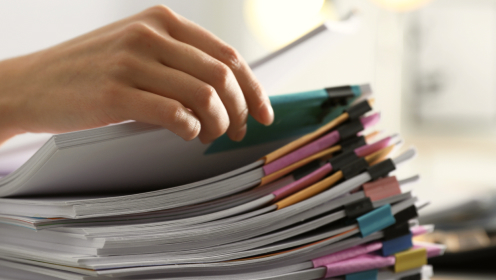A balance sheet is fundamental to understanding your business’s fiscal standing. It’s a financial snapshot showing what your company owns, owes, and the equity invested. This vital tool plays a pivotal role in financial planning and profitability analysis. Every small business owner must learn how to create a balance sheet.
WATCH THE FULL VIDEO BELOW!
What is Included in a Balance Sheet?
How to create a balance sheet begins with documenting and understanding its key components:
- Assets: Current (all cash, accounts receivable, marketable securities, prepaid expenses, inventory) and long-term assets (any fixed assets, intangible assets, long-term securities).
- Liabilities: Current liabilities (utilities, taxes, accounts payable, short-term debt) and long-term liabilities (bonds payable, long-term debts).
- Shareholders’ equity: Share capital and retained earnings.
Once you know how to create a balance sheet and account for your small business’s assets, liabilities, and shareholders’ equity, let’s see how to use this crucial financial tool.
Internal and External Importance of a Balance Sheet
Understanding how to create a balance sheet is a key element of both internal and external business analysis.
- Internally: Internally, your balance sheet is a tool for assessing your small business liquidity, identifying financial trends and issues, and prompting necessary operational adjustments.
- Externally: Externally, a well-documented balance sheet assists investors, lenders, and stakeholders assess your financial position, determine available resources and financing methods, and ensures compliance with reporting laws for external auditors.
Now that we understand what a balance sheet includes and the crucial role it plays in financial analysis, it’s time to learn how to put together a balance sheet for your small business. We’ll break it down into manageable steps.

Step-by-Step Guide to Creating a Balance Sheet
The process of how to create a balance sheet involves several key steps:
- The first step is selecting the balance sheet date, commonly set on a quarterly or monthly basis, which signifies the period you’re examining.
- Next, you need to list all your assets, arranging them by liquidity, from cash and accounts receivable to longer-term investments.
- After listing your assets, verify the total assets against your general ledger, which acts as a master list of all financial transactions, to ensure accuracy.
- Then determine your current liabilities, which include money you owe soon, such as accounts payable, short-term notes payable, and accrued liabilities.
- Next, calculate your long-term liabilities that extend beyond one year, such as long-term notes, bonds payable, pension plans, and mortgages.
- Following your liabilities assessment, add up all your current and long-term liabilities to provide a complete financial picture.
- Then calculate your owner’s equity, factoring in retained earnings and working capital, essentially showing the value left for owners after all your debts are paid.
- Finally, validate your balance sheet by ensuring the total liabilities and owner’s equity match your total assets.
LISTEN TO THE FULL PODCAST EPISODE BELOW!
Understanding how to create a balance sheet lets you effectively steer your small business toward financial stability and ongoing growth. For more assistance with your restaurant accounting, please schedule a demo or call us today at (720) 826-9900.







